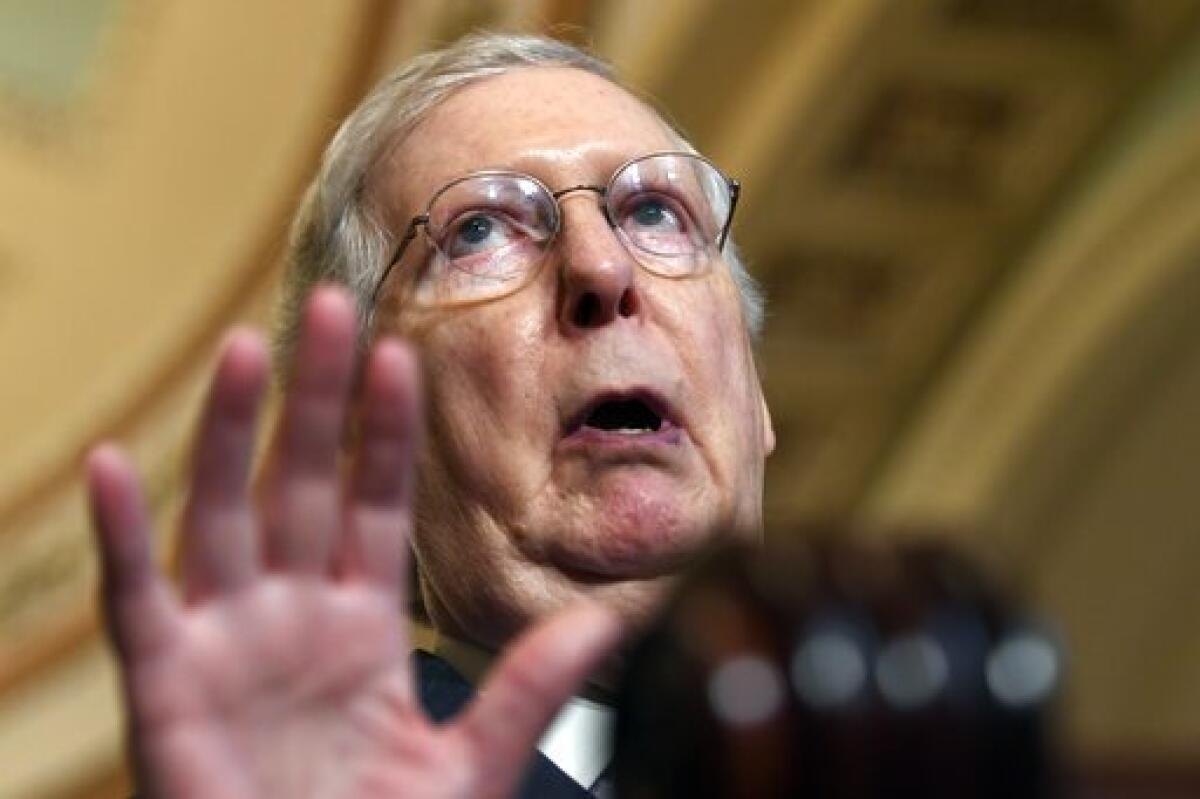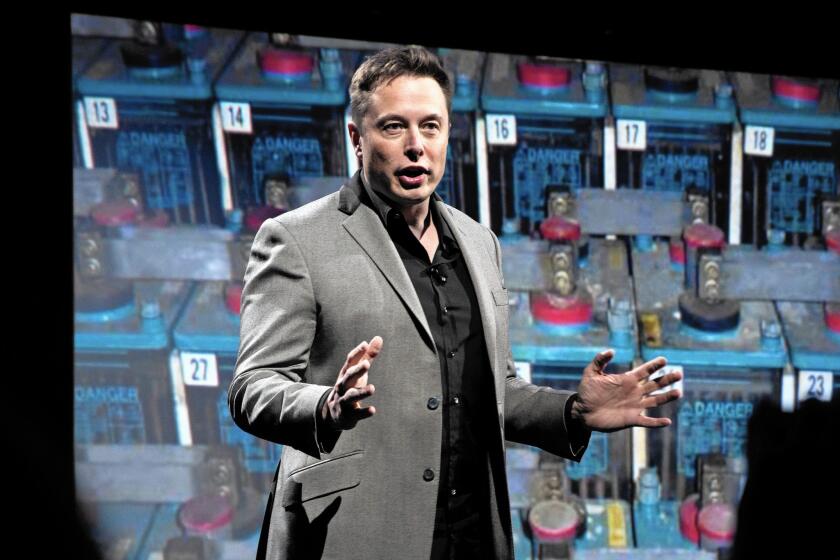Column: Social Security trustees say the U.S. is rich enough to expand, not shrink, benefits

- Share via
The army of perennial doomsayers about the financial condition of Social Security had to be a little crestfallen after the release of the program trustees’ annual report last week.
That’s because the report documented that the program’s condition had actually improved in the last year, if modestly.
More to the point, the trustees’ data underscored that the cost of maintaining Social Security benefits at current levels, or even expanding and improving them, is well within the capacity of the American economy at least to the end of this century, which is as far as the trustees looked.
This discussion is really about politics and values, not about affordability.
— Eric Kingson, Social Security Works
To be more specific, the trustees project that the depletion of the Social Security trust funds would take place in 2035 — up from 2034 as calculated in last year’s report.
At that point, enough money would be coming, mostly from payroll taxes, to cover 80% of then-scheduled benefits, up from the 78% projected a year ago.
Get the latest from Michael Hiltzik
Commentary on economics and more from a Pulitzer Prize winner.
You may occasionally receive promotional content from the Los Angeles Times.
The improvement was due in part to the unexpectedly powerful economic rebound after the brief pandemic-related slowdown in 2020.
This slight improvement didn’t stop news organizations and budget deficit hawks from sounding their customary alarms. The Washington Post editorial board warned of “the Social Security and Medicare disaster” looming ahead.
The Committee for a Responsible Federal Budget, a hive of budget hawks, warned that “the latest Social Security projections show the program is quickly headed toward insolvency.”
The committee has always been closely linked to a foundation established by the billionaire investor Peter G. Peterson, whose hostility to Social Security was a byword.
Means-testing social programs can doom them to failure. Here’s why.
The most important figures in the 268-page trustees report may be those squirreled away in an appendix on page 218. These figures project the cost of Social Security as a percentage of gross domestic product — that is, as a share of the U.S. economy.
They show that the program is eminently affordable — indeed, that there will be plenty of headroom in the economy, thanks to its continued growth, to expand the program and increase benefits.
This year, the trustees reckon, Social Security’s combined costs for retirees, those with disabilities and their dependents will come to about 4.98% of an economy valued at $25 trillion. Through the turn of the century, that percentage will peak at 6.18% in 2075, when GDP is estimated to be more than $208 trillion, then will fall to about 5.87% in 2100, when GDP is projected to be $574.5 trillion.
Is this “unaffordable”? Not by international standards. Some of our closest allies in the developed world spend much more than we do on public retirement and disability programs — Japan spends 10.5% of its GDP, France 15.3% and Germany 12.5%.
Is spending as much as 6.18% of GDP unsustainable? Given that the U.S. has spent much more on unproductive programs in our recent history, that wouldn’t seem so.
Military spending reached 9.4% of GDP in 1967, during the Vietnam War, without raising cries that the country was going bankrupt. Defense was still consuming 6.8% of GDP in 1982, seven years after that war ended, and even today counts for about 3.7% of GDP.
Somehow, defense spending is treated in Washington as sacrosanct, while the support of seniors, those with disabilities and their families is a threat to the national wealth.
The notion that we can’t afford Social Security and Medicare is a shibboleth of conservatives, Republicans and their anti-tax constituencies.
In 2018, then-Senate Majority Leader Mitch McConnell (R-Ky.), identified “entitlements” — that’s Washington-speak for Social Security, Medicare and Medicaid — as “the real drivers of the debt” and called for them to be adjusted “to the demographics of the future.”
Experts had forecast that COVID-19 would crater Social Security’s finances. They were wrong.
Translation: He wanted to cut benefits.
A year later, Sen. Joni Ernst (R-Iowa) said members of Congress should hold discussions about Social Security “behind closed doors ... so we’re not being scrutinized by this group or the other.” She meant “voters.” And yes, legislation is always easier when it takes place out of public view.
Then there’s Sen. Rick Scott (R-Fla.), whose “Rescue America” manifesto calls for sunsetting every federal program, including Social Security, after five years. His plan advocates requiring Congress to “issue a report every year telling the public what they plan to do when Social Security and Medicare go bankrupt.” Since those programs can go bankrupt only if Congress connives for that to happen, this is a curiously tautological mandate.
Scott, by the way, is the Senate’s richest member, with a personal fortune estimated in 2020 at nearly $260 million.
“This discussion is really about politics and values, not about affordability,” says Eric Kingson, chairman and co-founder of the advocacy group Social Security Works.
That point is lost on too many commentators in the media. The Washington Post’s editorial board bolstered its alarmist headline with the ludicrous assertion that “the vast expansion of outlays for the elderly” projected for Social Security and Medicare “would hollow out the government’s ability to spend on education, infrastructure, anti-poverty programs and other investments in children and working-age adults.”
The Post repeated the contention, without examining it, that “any plausible future settlement would require some mix of modest benefit adjustments and tax hikes.” (What’s a “benefit adjustment”? If the editorialists mean benefit cuts, they should say so. This is how conservative attacks on the welfare of ordinary Americans suddenly become “plausible.”)
McConnell, as it happens, had things backward when he implied that the “demographics of the future” justified reducing benefits. The demographics of the future pointed to increased economic inequality, which makes Social Security, Medicare and Medicaid more important to the average American, not less so.
That’s the point of efforts in Congress to expand and increase Social Security benefits, as would be done by a bill dubbed Social Security 2100, introduced by Rep. John B. Larson and Sen. Richard Blumenthal, both Democrats from Connecticut.
The measure would increase benefits across the board by an average 2%, set a minimum retirement benefit at 25% above the federal poverty line and extend dependent benefits for students up to age 26 (the current cutoff is 19), among other improvements.
On the revenue side, the bill would eliminate, over time, the existing cap on wages subject to tax, which is $147,000 this year — a level that in effect gives the 1% a pass on their obligation to support this universal system. (The payroll tax is 12.4% up to that wage cap, shared equally by employer and employee.)
Underscoring income inequality, America’s billionaires are already done paying their Social Security taxes for 2021.
More could be done to provide additional revenue for Social Security. One option would be to make all income, not just wages, subject to the Social Security tax, thus bringing the capital gains and dividends that make up a disproportionate share of income for the wealthiest Americans into the revenue stream.
That option doesn’t get talked about much, perhaps because politicians know that the wealthy would go to the mat to protect their capital gains from higher taxes.
What’s unnerving about discussions of Social Security’s future in recent years is the emerging assumption that doing something about the program’s fiscal situation requires a combination of higher revenues and cuts in benefits. Although the first is imperative, the latter option must be taken off the table.
The most misleading claim by those advocating fixes is that they must be done now because waiting will only make the required reforms more stringent.
This makes absolutely no sense. Making the program fully solvent for the next 75 years, the CRFB asserts, would require a 3.24 percentage point increase in the payroll tax today but 4.07 percentage points if delayed until 2035. The program could be fixed supposedly, by a 20% benefit cut across the board today, but 25% if deferred to 2035.
That means depriving workers of more than a decade of benefits or charging them more than a decade of higher taxes, just to make the ultimate changes more politically palatable. Workers don’t gain a thing in those scenarios. It should be obvious that these are “fixes” for Social Security in the same sense that one “fixes” a cat or mobsters “fix” a stool pigeon — the improvements aren’t felt by the targets, that’s for sure.
There are sound reasons for shoring up Social Security’s financial condition. They get sounder every day as the wealth of the 1% continues to outstrip the income of ordinary families and the household resources fall further behind what’s needed for a sustainable, comfortable retirement.
Social Security is the most successful program in American history, and surely the most popular. “Part of the reason this program needs to be understood as a public utility and a public good is that it’s one of the few things we all agree on, pretty much, and we badly need that today,” Kingson told me. “The calm that comes from this year’s trustees report is a reminder that we all have a stake in this system, and it works well.”
More to Read
Get the latest from Michael Hiltzik
Commentary on economics and more from a Pulitzer Prize winner.
You may occasionally receive promotional content from the Los Angeles Times.














